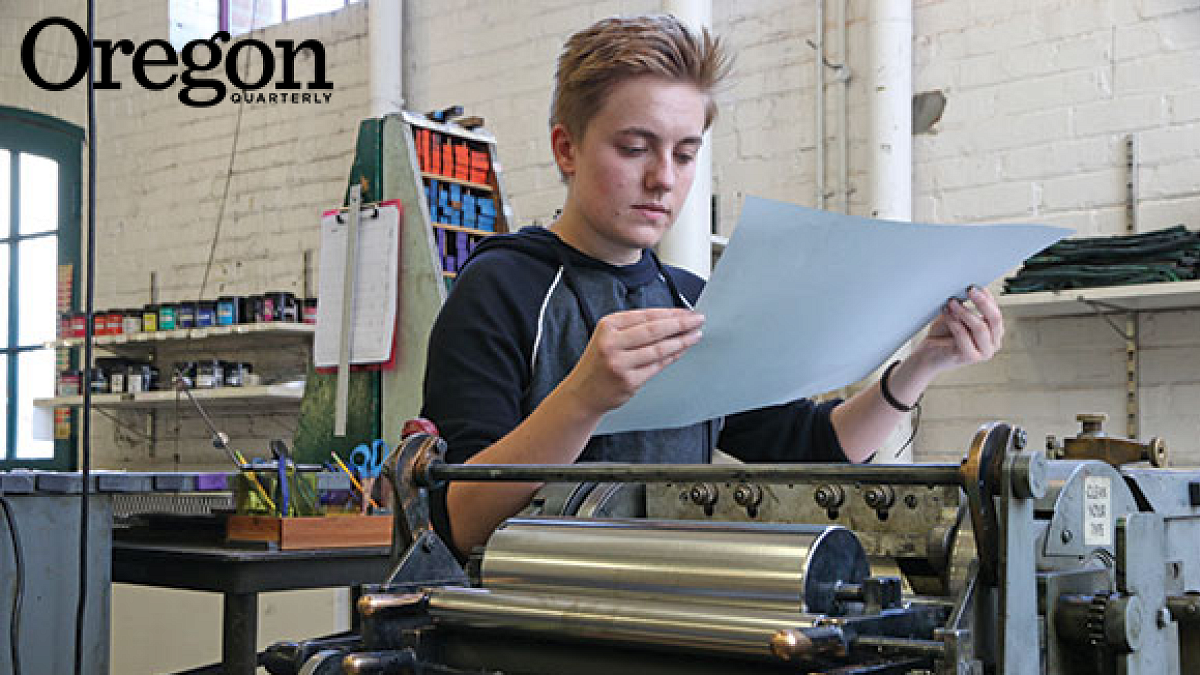My first ever letterpressed sentence was a quote from Stanley Lombardo’s translation of The Odyssey. “Speak, memory, of the cunn ng hero. The wanbererer . . .” I stared at the thick handmade paper indented forever by the lead type I had set, and I thought “crap.”
The type was tightly locked into place on the bed of the press. My index finger and thumb became tweezers as I wedged out the dead, worn out, “i” and replaced it. I found a “d” that I hoped wasn’t secretly a “b” like the last one was. Spacers replaced the extra “er” and when I inked the type with the rollers again and cranked the paper through the machine, the final product read, “Speak, memory, of the cunning hero, the wanberer . . .”
***
I had a friend tell me in high school that I wasn’t a writer, maybe more of a typist. Most of my work was done on a computer, and he wondered if I needed journals and fountain pens to call myself a writer.
In my first two years of college I challenged that notion with a plethora of creative writing courses. In these I learned that I was indeed a writer, but a novice one. Every undergrad was: default. Our work was to be turned in in size 12 Times New Roman font with a specific header. We learned of narrative structure, character arcs, objective correlatives, and epiphanies. The words we used were a medium through which our creative energy rode. A rough draft was something you dredged through on your way to satisfactory production.
I was often frustrated. I was called experimental and it was no compliment. I was told that I “wrote well as an excuse not to tell a real story.”
Then I took a course titled Publishing in the Expanding Field. We had to make 15 copies of our own art book. Conventions engrained in me were challenged through marginalia, ephemera, and entropy. These ideas were to culminate in our final project through use of the letterpress printers.
My home printer was a mess of toner. The printer at work was a beast obsessed with jamming. And don’t get me started on the library printers.
Yet the Vandercook no. 4 letterpress in Lawrence Hall had been working since the early 20th century, and as I printed on it, it printed on me.
Now each time I write I think about the time I could have spent finding and setting each individual space and letter. For my final project in that course I wanted perfection, but the final project had seven irreplaceable spelling errors, which I tried to block with black ink. I still missed a few.
Using that press taught me this: the best printer on campus is the one that makes you come face to face with your words. It reminds you that embracing your errors makes you cunning. Because of the letterpress printer, I have a new appreciation for experiments, typing, and wanbering.
—By Forrest Munro
Forrest Munro is a cinema studies major and creative writing minor from Kansas.


